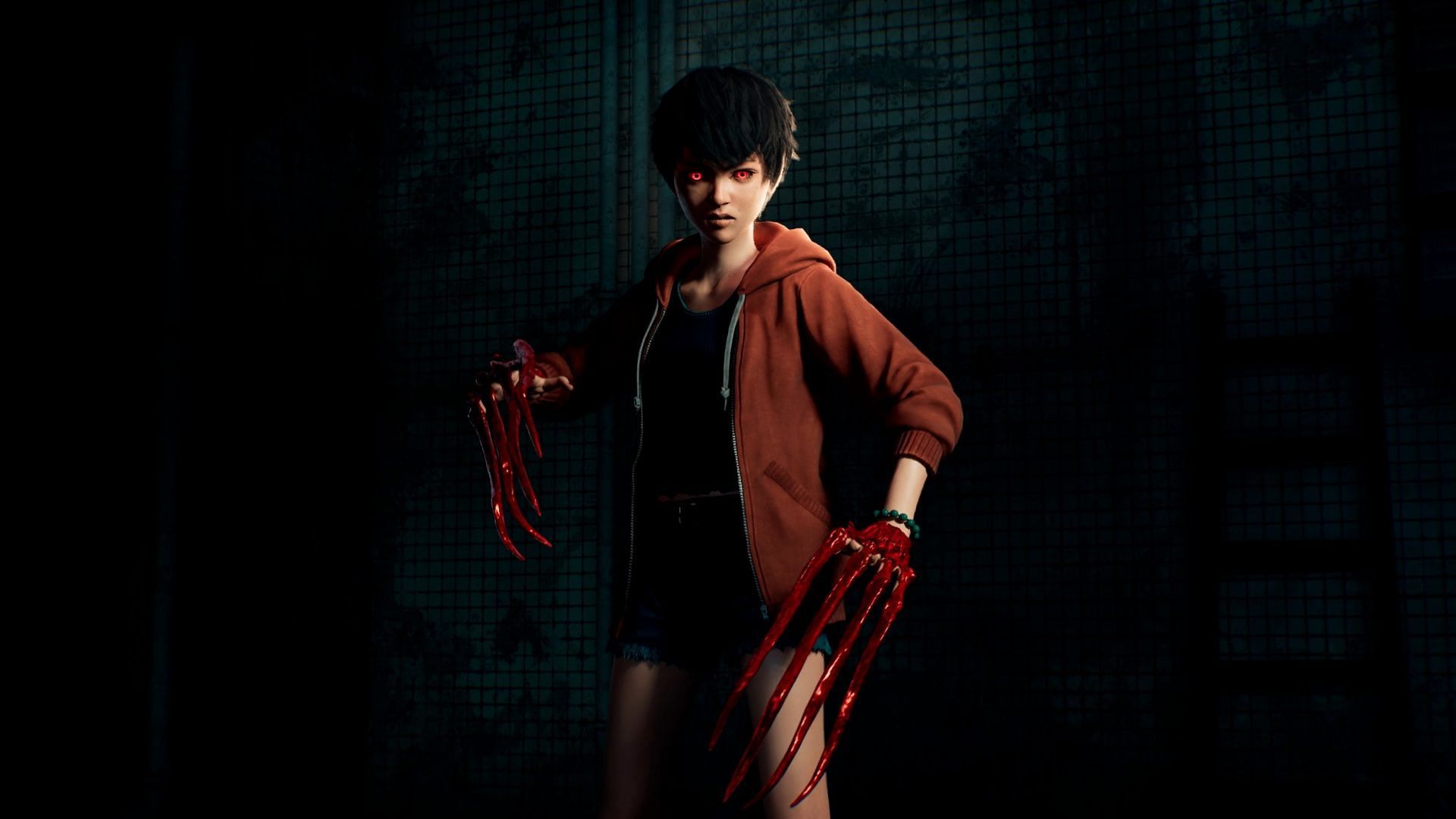
Slitterhead review - Innovation stumbles over a corpse of flaws
After debuting at The Game Awards three years ago, Slitterhead is finally snaking its way onto modern platforms. Developed by ex-Silent Hill devs at Bokeh Game Studio, this debut project from the Japanese developer aims to be something that is both truly unique and horrifying simultaneously. While the end product's action-horror persona is not something fans hoped for, it surely shows promise.
That said, fans also expressed concern over the game's general jank and lack of budget as pre-launch footage showcased. How many of these fears are valid and is the game worth a pickup despite any flaws? Find out in our full review for Slitterhead.
Wage war against the unknown in Slitterhead
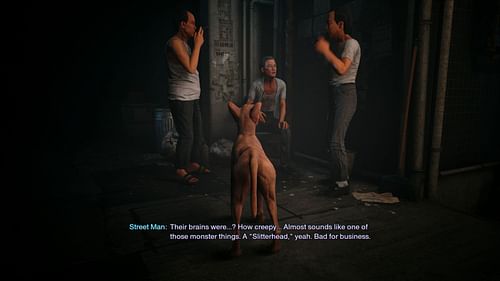
The plot unfolds during the 1990s, in the fictional East-Asian city of Kowlong, a seedy underbelly of crime that gets turned upside down once mysterious murders start cropping up across its streets and alleys. With victims having their brains slurped out, leaving a wide open cavity where their grey matter once was, the killings are done by mysterious creatures called Slitterheads.
Since these terrifying beings disguise themselves as other humans, they have easily wormed their way into various levels of general society in Kowlong. Players step into the mind of a spiritual entity called Hyoki, who can possess humans to battle this threat. This forms the basic premise of the game, with players able to possess most NPCs walking around the city to aid Hyoki's goals.
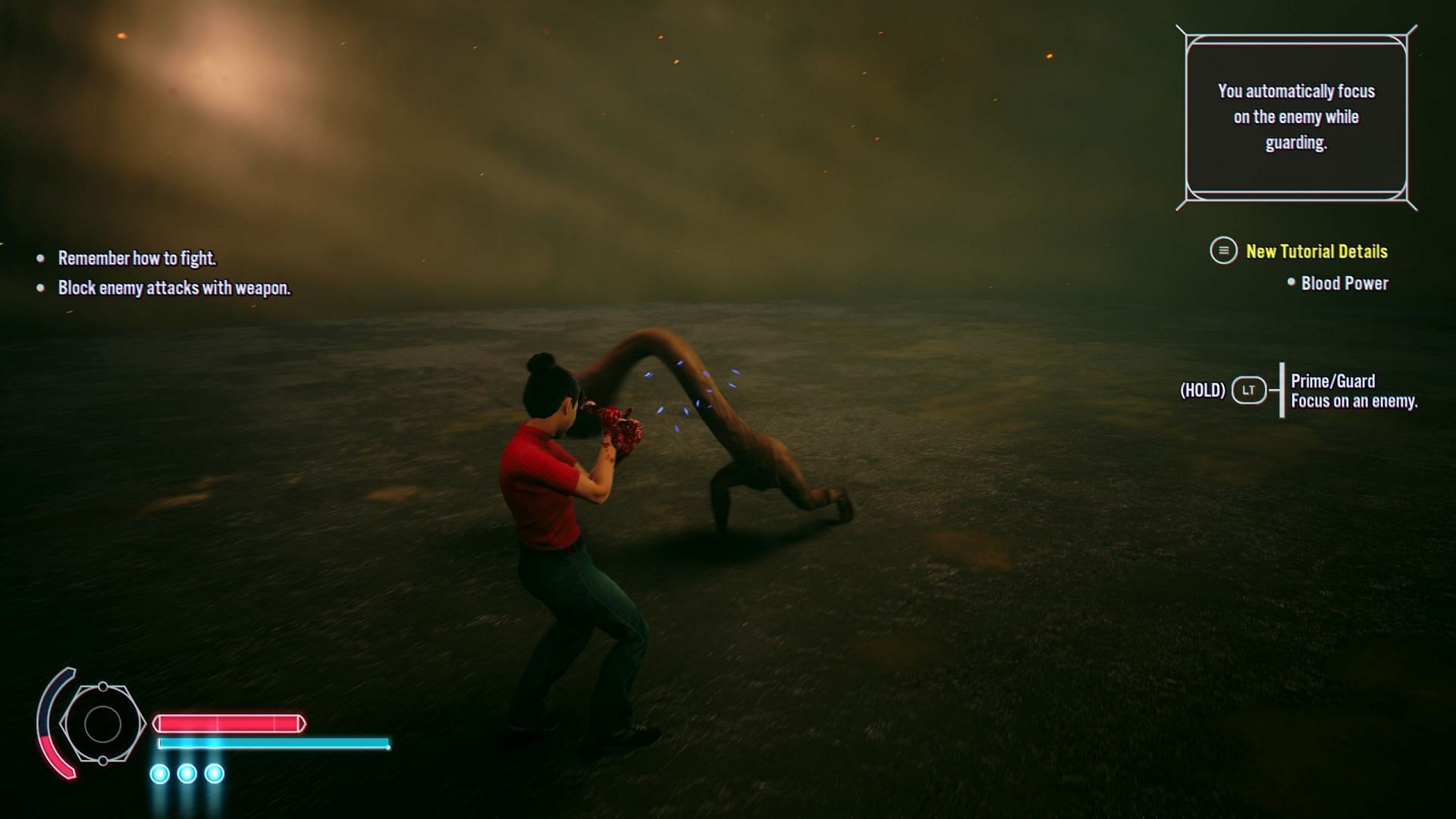
To spice things up, Hyoki grants the host supernatural strength and blood powers, which are vital while facing off against the grotesque monsters. However, these powers come at the cost of physically hurting the host during battles; this disdain for human life to achieve his goal establishes Hyoki as a neutral entity that players can not trust at first despite agreeing on the same goals.
During the adventure, players will also encounter people called Rarities: humans who are far more compatible with Hyoki than an average host, which in turn grants them enhanced strength, survivability, and new abilities. These include a young girl named Julee, the helmet-totting biker Alex, and more, each of whom boasts different skills.
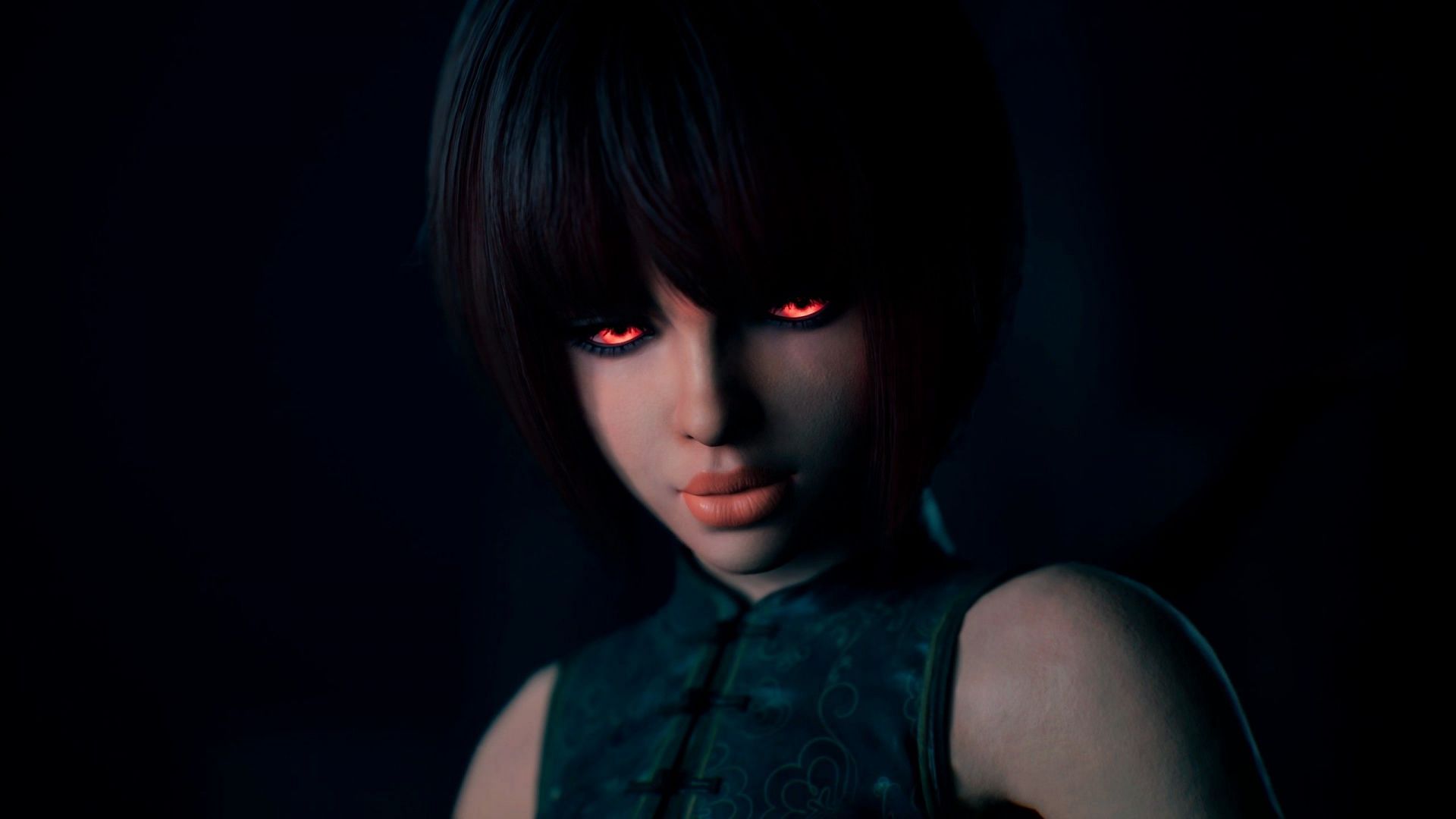
On top of this, each of the Rarities' interactions with the spirit in their head will be different, since each individual possesses distinct goals, ideals, values, and so on. As cool as this concept is, it sadly doesn't go anywhere as most interactions are blandly written and presented in largely static cutscenes selected via the Interval style mission select screen.
Slitterhead's scenarios take place over a few days surrounding a plot-integral time loop. This allows players to recruit new Rarities and learn more about the malicious threat lurking at the heart of the city. Much of this is presented in the form of investigations and exploration across the game's linear map as players hop between bodies to get to new locations or obtain new information.
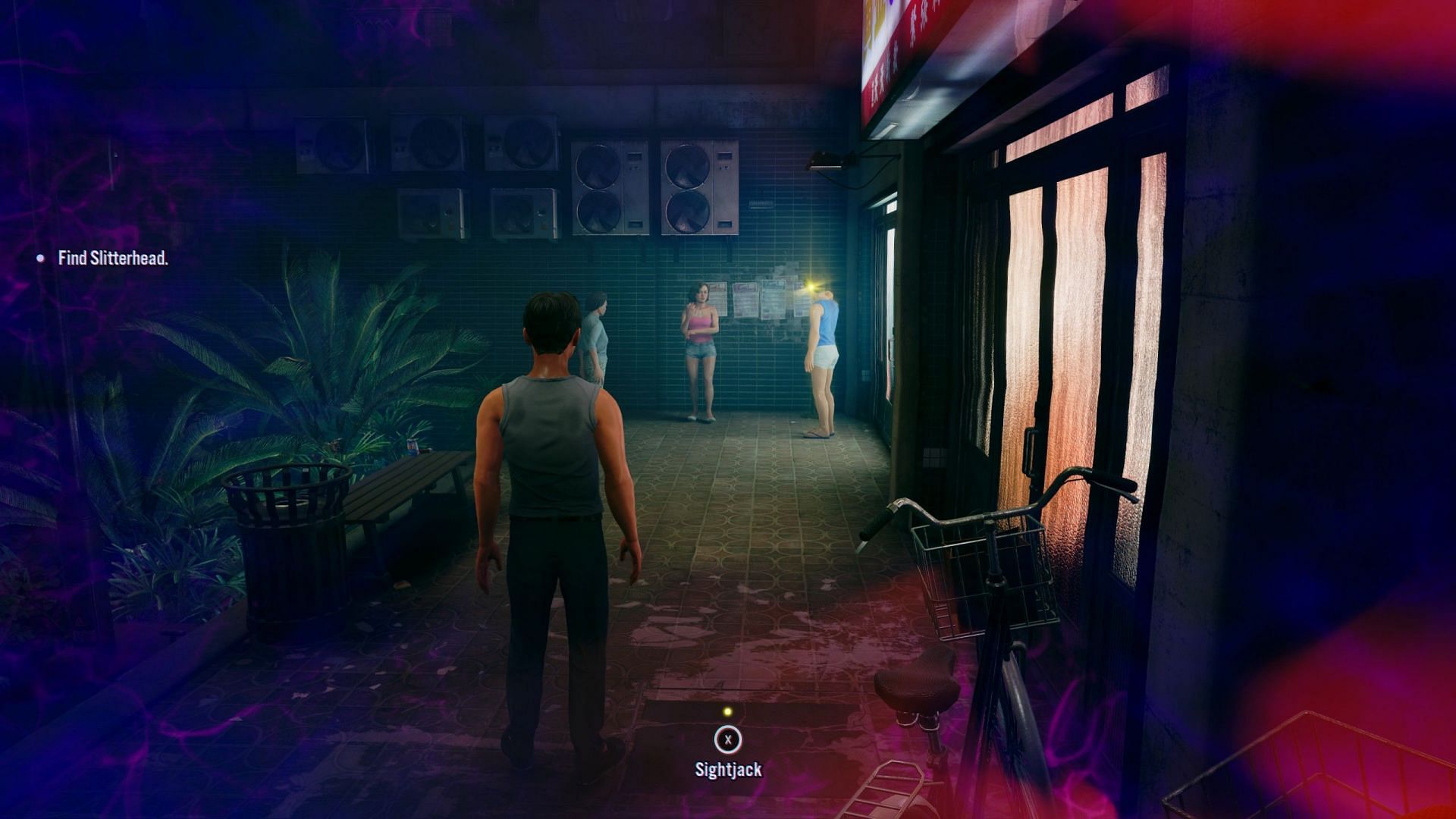
Much of this is fairly basic, in the form of light puzzle solving or worse, shallow stealth sections that feel like busywork more than anything else. The repetitive chase segments where players must track down Slitterheads hiding in plain sight and then prevent them from escaping do not help either.
This scenario often boils down to spamming the same few ranged attacks as Hyoki swaps between bodies to catch up to the monster.
Upon completing missions or finding scattered Memories in missions, players will be rewarded with skill points that can be spent to upgrade a Rarity's health and active & passive skills. This brings us to the other core aspect of the game: combat.
A blood-soaked rave
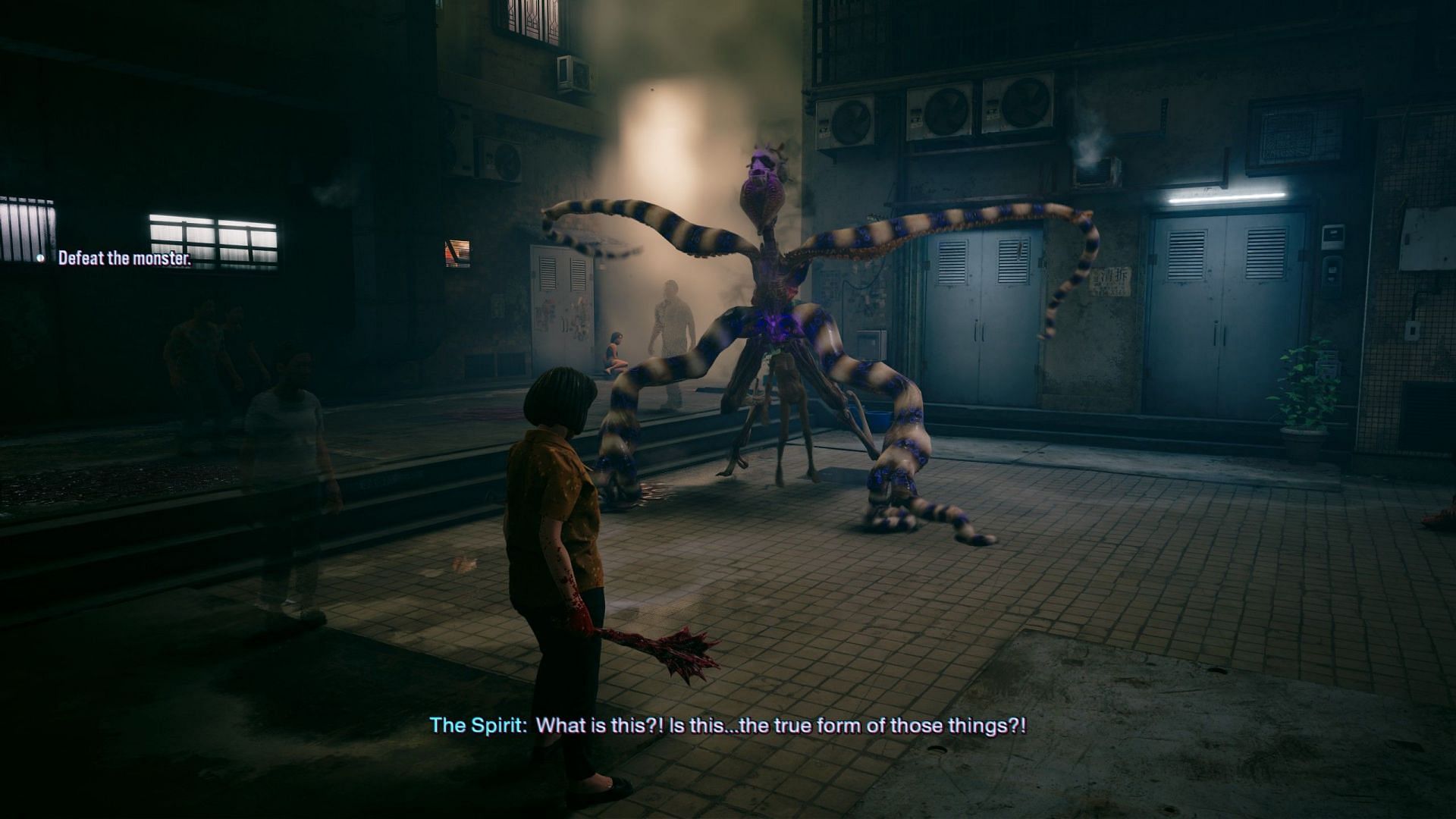
While Slitterhead is slow to start, players will quickly become familiar with its varied mechanics and gameplay systems. While not all humans can be possessed, Hyoki can freely swap between controllable bodies. Both the hosts' HP and melee weapon share the same resource: blood, so there is some risk-reward for juggling the two.
All humans can dodge incoming attacks and block directional ones indicated by a flashing blue prompt. The latter is key when engaging Slitterheads that transform into their true grotesque boss forms, which are large mantis or octopus-esque threats that will mow down anyone in their path.
Blocking correctly helps mitigate weapon durability, and successfully repelling foes slows down time to let players chip in extra damage.
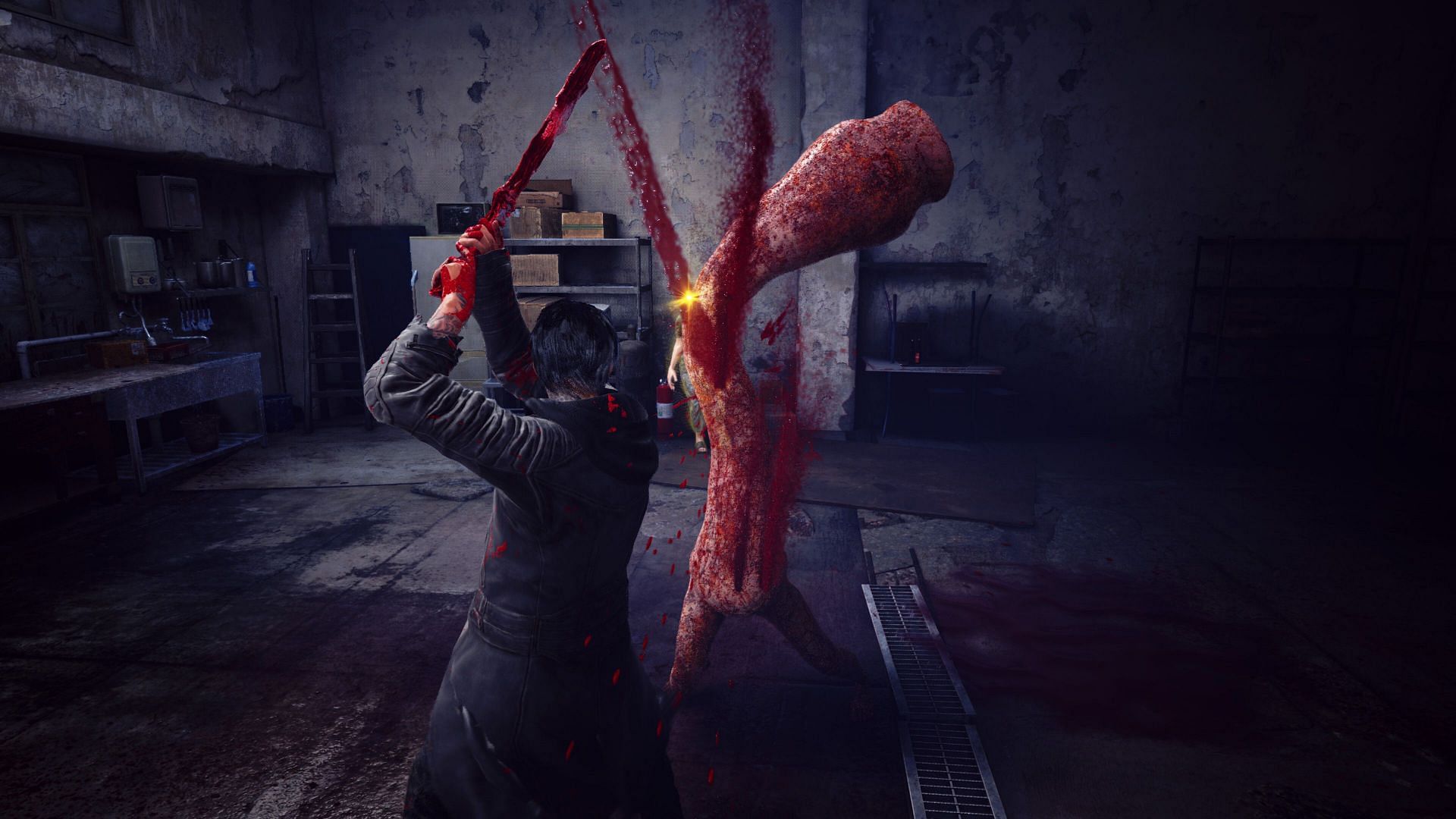
Slitterhead will not shy away from pitting players against multiple foes during battle encounters. To survive, players must overwhelm the foe with numbers and use possession aggressively by swapping to and from bodies to keep the assault ongoing. This is especially necessary if the host is in a critical condition.
To incentivize this, the game grants temporary damage and HP buff when possessing a host for the first time.
For newcomers, taking damage will be inevitable, which will spray a ton of blood around the arena and can be soaked up to heal the host. While most humans function similarly, with most having access to the same unlocked projectile attacks, the Rarities have their own set of unique powers that also utilize blood.
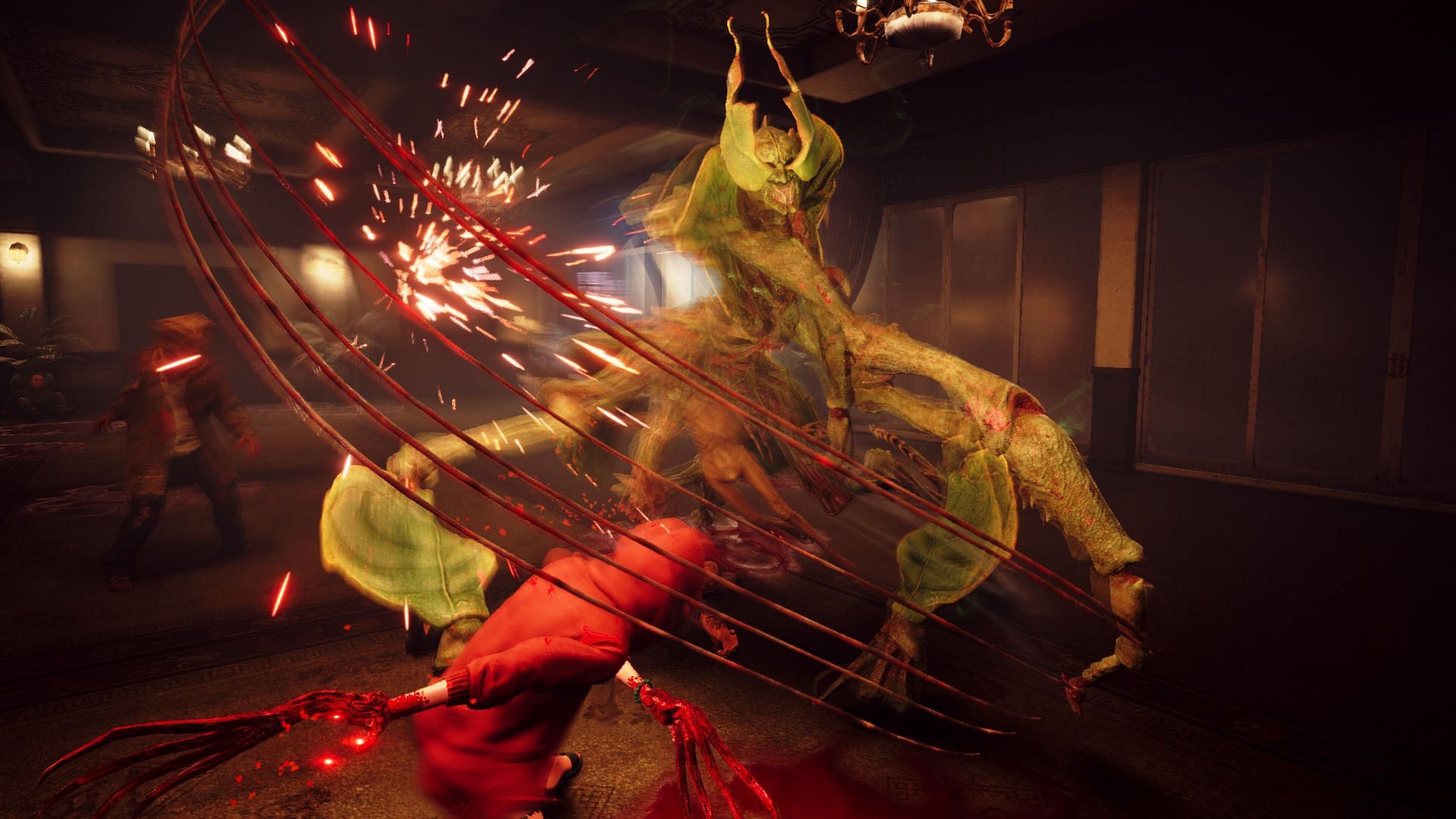
One example of such unique powers is Julee's ability to revive downed hosts while regenerating their as well as her own HP. Then there is Alex's orb that pulls in surrounding foes to help thin out the crowd easily.
Despite the game's focus on defensive play, the counter system falls apart slightly. Players will usually find themselves fiddling more with possession and managing skill cooldowns than dodging and blocking as multiple enemies swarm one host.
Even if players find the combat enticing enough, it quickly loses its charm due to the less variety in enemies and the repetitiveness of the time loop. The former feels like an after-effect of the team running out of budget rather than a proper progression aspect.
Graphics, performance, and sound
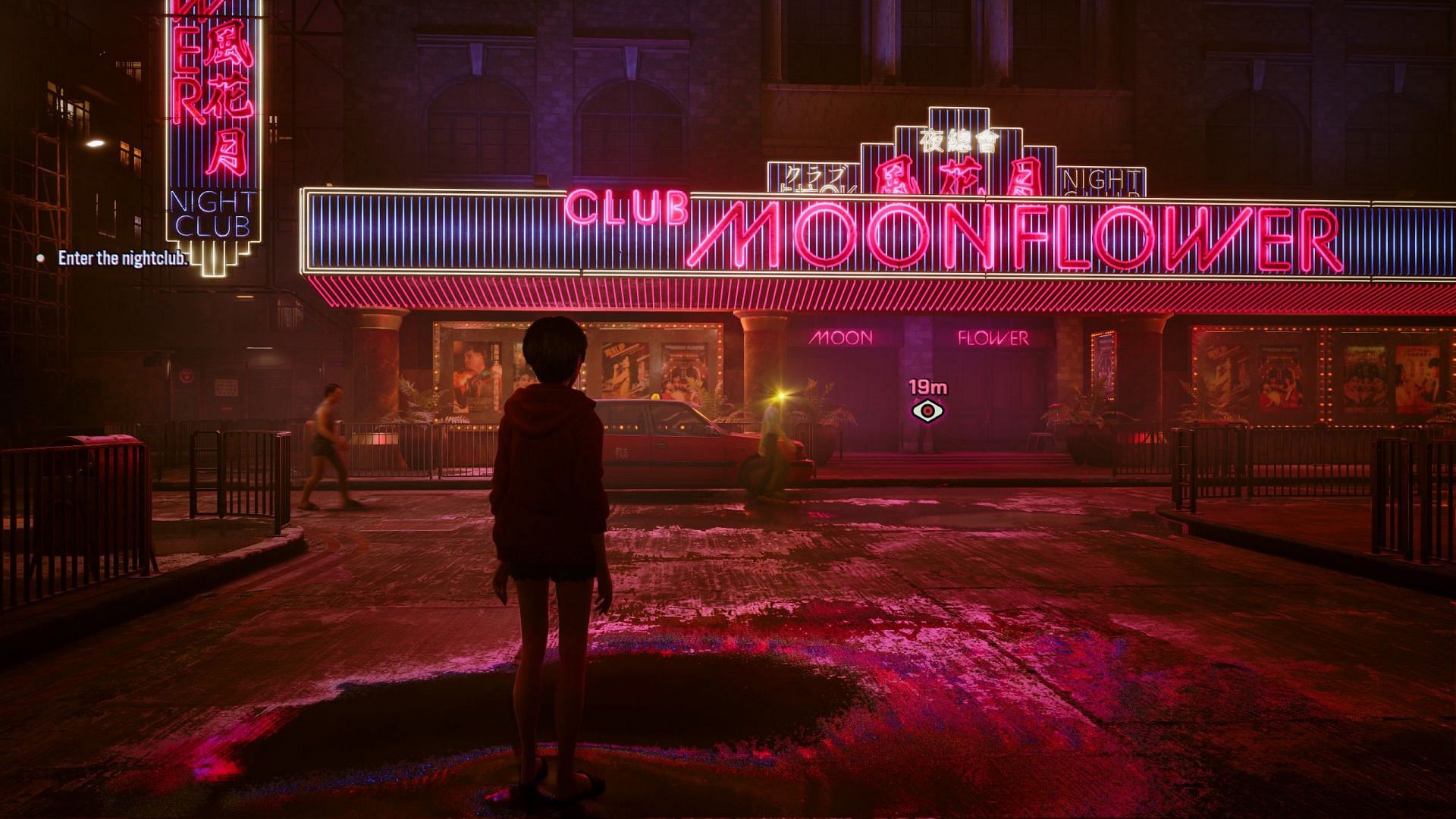
While Slitterhead utilizes Unreal Engine 5, it doesn't look current-gen. If anything, uninitiated players would be excused for thinking this is a remaster of a PS3 title, even when the game is visually at its best at max settings.
On the bright side, performance is rock solid on PC so fans need not worry about it and I'm sure the game's linear level design helps as well. Despite falling short in the technical department, Slitterhead deserves praise for its stylish presentation. From the flashy action scenes and other-worldly monster designs to the brooding atmosphere that clings to the air, everything is visually stunning.
Much of this is further amplified by the excellent soundtrack by the iconic composer Akira Yamaoka of Silent Hill fame. If nothing else, I think this IP would make for a superb live-action series or movie in the right hands.
In conclusion
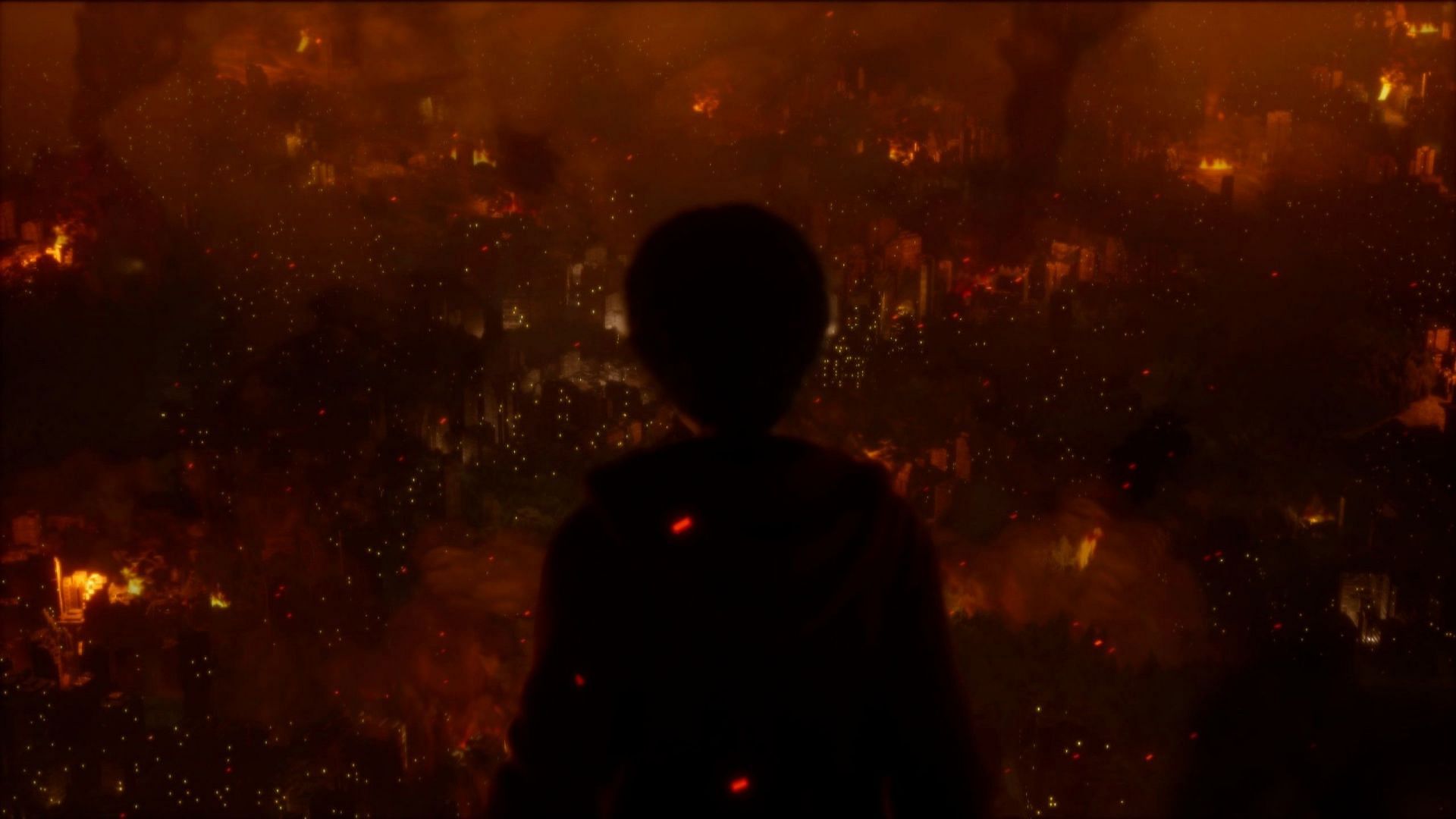
Despite bringing a bunch of unique ideas to the table and making a solid first impression, Slitterhead begins to lose steam as players navigate the lonely alleys of Kowlong city. While it is evident that much passion has gone into this project, it is also clear that the devs had budget restraints.
As such, what we get is a corpse that has the skeleton of a cool concept, a slick presentation, and a great soundtrack. However, it is riddled with a swathe of pests like lackluster writing, messy combat mechanics, tedious repetition, and a lot of clunkiness that would be expected from a PS3-era title. Simply put, players will see much of what Slitterhead has to offer in the first 5-6 hours alone.
Still, those who yearn for the times when quirky, inventive PS2 hidden gems boasting weird mechanics and nostalgic jank were aplenty, will find Slitterhead a neat surprise amidst today's tidal wave of safe sequels and remakes. Regardless of whether Slitterhead is a home run, the fact that Bokeh Game Studio attempted something fresh and never seen before is something worth commending in itself.
Slitterhead
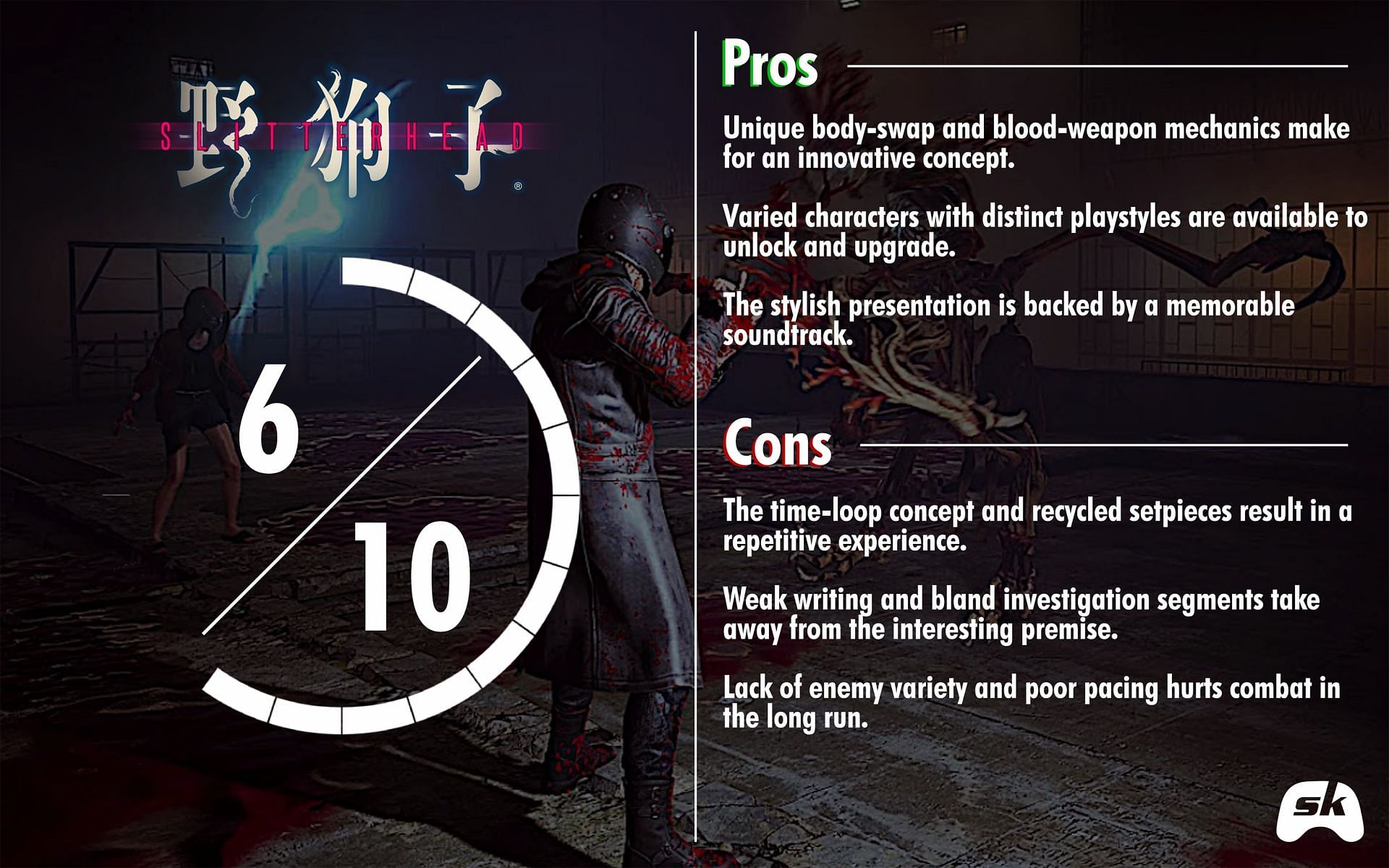
Reviewed on: PC
Platform(s): PC, PS5, Xbox Series X|S
Developer(s): Bokeh Game Studio
Publisher(s): Bokeh Game Studio
Release Date: November 8, 2024